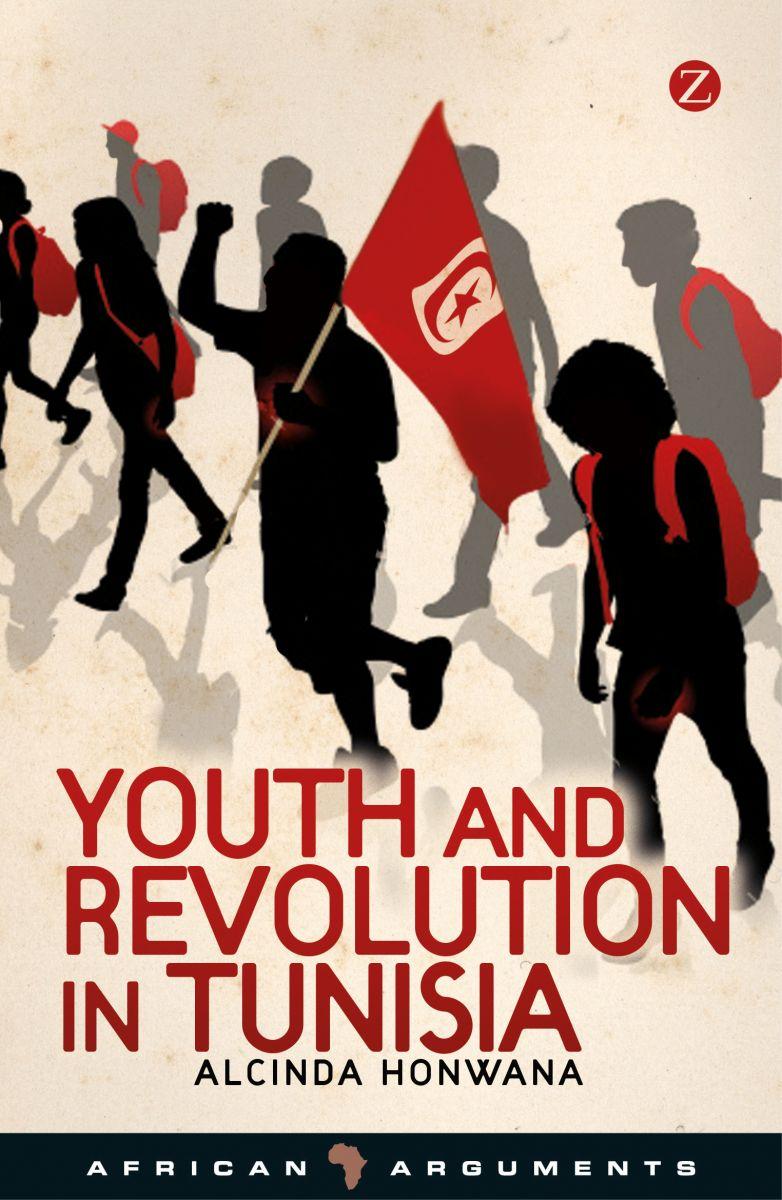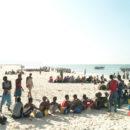Sudanese National Elections and Prospects for Political Accommodation
This posting introduces a new report by Conflict Dynamics International, on national elections and the prospects for political accommodation in Sudan.
National elections – currently scheduled to take place during February 2010 – are rightly being viewed as a major step forward in democratic transformation of the political system and institutions in the Sudan. However, elections cannot be the end goal in and of themselves. Rather, they must be a means to an end objective of effective accommodation of competing political interests and perspectives in the whole of the Sudan.
The stakes are high. If elections and other modalities for political accommodation fail to effectively reconcile the political interests of various parties and constituencies, especially previously-marginalized groups: (a) there will be increased risk of (potentially-violent) disputes following elections; (b) secession will likely become the only attractive political option for the Southern parties in advance of the 2011 referendum; and (c) opposition Movements in Darfur will have little incentive to engage in substantive negotiations with the Government of the Sudan.
In this context, a critical question is whether elections alone can achieve effective political accommodation and thereby help to build peace. That is the central question which the following assessment seeks to explore.
A typology for political accommodation in the Sudan
The term political accommodation encompasses the objectives, process, or outcome of mutual conciliation around competing political views and interests. A typology of foci for political accommodation has been developed consisting of: (1) Federalism and decentralization; (2) Electoral process(es); (3) The Executive Branch; (4) The National Legislature; (5) Regional- and State Legislative Assemblies; and (6) Public participation.
Some qualitative criteria that can be used to gauge the effectiveness of political accommodation in the Sudan include the extent to which the interests and perspectives of the CPA partners, Darfurian opposition Movements and other parties are accommodated in political representation and decision making at various levels of government.
Demography and national elections in the Sudan
Demography – and particularly population distribution and origins – plays a particularly important role in the electoral process in the Sudan. The results of the Fifth Population Census conducted in 2008 identified the populations of the various regions as: Northern Sudan (excl. Darfur) – 23,378,555 (59.71 %) ; Darfur – 7,515,445 (19.19 %) ; Southern Sudan – 8,260,490 (21.10 %).
Perhaps the two most politically-contentious aspects of the 2008 census results have been the enumerated population of Southern Sudan and the number of Southerners resident in the Northern States. The SPLM has long asserted that the people of Southern Sudan make up approximately one-third of the overall population. Comparison of population data from multiple sources indicates that the results of the Fifth Population Census for 2008 fall in the approximate middle range of data from three other sources, suggesting that these data are at least reasonable plausible.
Prospects for political accommodation in the Sudan
This assessment of the prospects for political accommodation centers on: (i) the electoral process; (ii) the Executive Branch; (iii) the National Legislature; and (iv) Regional- and State Legislative Assemblies.
Prospects for political accommodation through the electoral process
The National Elections Act 2008 specifies a majoritarian electoral system for elections of the President, the President of Southern Sudan and the State Governors. This, combined with the unitary nature of the positions, reduces the potential for political accommodation in the State- and National Executives to be elected based on the law itself. The system for election of representatives to the Council of States does facilitate some degree of political accommodation as it gives: (i) equal representation to each State; and (ii) disproportionately high representation to the Southern region. Although a combined majoritarian-PR system will be used for election of representatives to the National- and State Legislative Assemblies, the majoritarian component of the system will dominate, therefore reducing the prospects for political accommodation.
Prospects for political accommodation in the Executive Branch
The institution of a three-member Presidency combined with qualified decision making (consent of First Vice President required) on certain issues ensures that there is a high degree of political accommodation within the Presidency on those specific issues. The provisions of the Darfur Peace Agreement do not enjoy the same constitutional guarantees as, for example, the decision-making procedures within the Presidency specified in the CPA.
Prospects for political accommodation in the Council of States
The structure and likely composition of the Council of States following elections will achieve a moderately high degree of political accommodation in this chamber. However, because of the system by which the Council members will be elected, the majority composition of each State Legislative Assembly will likely be reflected in the political affiliations of the Council members for that State. The decision-making procedures for the Council of States are such that the Southern parties would (voting as a bloc) have the ability to veto legislation. Darfur’s regional representation of 6 seats in the Council of State will not be able to significantly influence decision-making in the absence of a coalition with one or more of the dominant parties.
Prospects for political accommodation in the National Assembly
The prospects for political accommodation in the National Assembly following the elections will clearly depend on the outcome of the elections, but will also be strongly influenced by the way in which the newly-composed National Assembly will make decisions. There are a number of scenarios that can be considered for the outcome of the election of representatives to the National Assembly.
Scenario 1: NCP retains a majority in the National Assembly
Scenario 2: SPLM secures sufficient seats for majority in the National Assembly
Scenario 3: Northern opposition parties form an alliance and build a majority coalition
Scenario 4: SPLM forms a coalition to include non-NCP Northern parties
Scenario 5: NCP and SPLM form “˜grand coalition’ in the National Assembly
Scenario 6: An unstable, juxtaposition of coalitions or parties with small party/parties deciding the balance of power
The six scenarios above can be grouped in three categories: (I) single party majorities; (II) stable multi-party majority coalitions; and (III) volatile multi-party majority coalitions. Apart from unknowable voter preferences, there are a number of technical considerations that can help shed light on these scenarios:
First, the National Elections Act 2008 specifies that election of 60 percent of the members of the Legislative Assemblies will be according to a majoritarian system using single-seat geographical constituencies. The use of single- rather than multi-seat constituencies reduces the potential for supporters of minority parties to elect their chosen representatives. Second, the National Elections Act specifies that 40 percent of the members of the National-, Southern Sudan and State Legislative Assemblies are to be elected from women’s- and political party lists (25 and 15 percent respectively) at the State level, rather then, for example, at the national level. Third, for election of the 40 percent of the members of the Legislative Assemblies that are to be elected using the PR system: (i) the qualifying threshold for political party- and women’s lists to be considered in the election of representatives is 4 % of votes; and (ii) party lists are for a single party and not an alliance of parties.
Separate from these technical factors, even a cursory analysis of recent alliance forming preferences of political parties in the Sudan (and in Northern Sudan in particular) highlights the fact that Northern parties have in recent years generally only engaged in “˜tactical’, short term alliance formation.
Likelihood of Scenario in Category I – Single-party majority: There is a medium- to high likelihood that Scenario 1 (“NCP retains a majority in the National Assembly”) is realized following elections. The use of single-seat geographical constituencies and political party lists at State level (rather than at national level) will make it difficult for non-NCP parties to secure large numbers of National Assembly seats to represent the Northern constituencies. By corollary, this significantly reduces the likelihood of Scenario 2 (“SPLM secures sufficient seats for majority in the National Assembly”).
Likelihood of Scenario in Category II – Stable multi-party majority coalitions: Even if the SPLM were to secure a number of seats in the National Assembly disproportionally higher than its potential support base, it is unlikely that the SPLM will be in a position to put together a majority coalition, and therefore there is a low likelihood of Scenario 4 (“SPLM forms a coalition to include non-NCP Northern Parties”). Based on analysis of the technical constraints and alliance forming preferences, it will be difficult for the Northern opposition parties to build and sustain a sufficiently broad-based coalition. Therefore, there is low likelihood of Scenario 3 (“Northern opposition parties form an alliance and build a majority coalition”).
Likelihood of Scenario in Category III – Volatile multi-party majority coalitions: In light of the fact that all parties will have to align themselves along a geographically- and ideologically polarizing debate in the near term following elections, it is unlikely that many Northern parties would enter into a balancing coalition for any purpose other than short term gains. Therefore, there is low likelihood that Scenario 6 could be sustained.
Prospects for political accommodation in the State Legislative Assemblies
The dominance of the “˜majoritarian’ component of the mixed electoral system for election of members from single-seat geographical constituencies and the threshold for parties to be included in the election of representatives from political party- and women’s lists will reduce the potential for effective minority representation in the State Legislative Assemblies. The use of simple majority decision-making procedures in the State Legislative Assemblies, will further exclude even the larger minority groups from an influential role in the legislative agenda.
Observations on elections and political accommodation
The assessment presented here highlights that neither the technical systems used for the various elections nor the likely outcome of the elections will realize the degree of political accommodation necessary to ensure that minority groups in the Sudan can be guaranteed a sufficiently influential role in political decision making to safeguard their political interests.
Elections alone will not achieve effective political accommodation!
The type of decision-making procedures employed in the Presidency, the National Legislature, and State Legislative Assemblies can critically affect the degree of political accommodation. The cases of Burundi and Northern Ireland illustrate that in certain contexts a greater degree of accommodation can be achieved by the combination of elections and consociational decision-making procedures than can be achieved through elections alone.
The following consociational arrangements could be explored for the Sudan:
1. Expansion of the range of decisions of the Presidency that require the consent of the First VP;
2. Institution of a “˜parallel consent’ voting procedure (similar to that used in Northern Ireland) in the Council of States;
3. Institution of a two-thirds majority voting procedure in the National Assembly, as exists for certain types of legislation in the Council of States (and as used in Burundi);
4. Institution of a “˜parallel consent’ voting procedure for key decisions in the National Assembly, which would require that such decisions be taken by a majority of members, including a majority within each of the blocs of “˜Northern’ and “˜Southern’ representatives;
5. Institution of a “˜three-way consent’ voting procedure for key decisions in the National Assembly, which would require that such decisions be taken by a majority of members, including a majority within each of the “˜Northern’, “˜Southern’ and “˜Darfurian’ blocs;
6. Institution of a two-thirds majority voting in the Darfur State Legislative Assemblies;
7. Institution of a “˜parallel consent’ voting procedure in the Darfur State Legislative Assemblies;
8. Establishment of a senior position within the Presidency to represent Darfur, and which would have a constitutionally-guaranteed role. The President would require the consent of this elected official to make certain key decisions that most directly relate to Darfur.
Conclusions
The process and likely outcomes of elections, in the absence of other modalities, will not achieve effective political accommodation in the Sudan. However, elections and new consociational arrangements – mechanisms that are politically feasible and can be implemented within the current framework of the CPA and Interim National Constitution – could significantly increase the prospects for effective political accommodation in advance of- and following national elections.







Very useful piece. Useful recommendations and realistic tone. The focus on political accommodation is a good practicable addition to the political vocabulary.
Interesting contrast to the “Enough” report on elections of a couple of days ago which was disappointing. I can’t help feeling that “Enough” is desperately trying to curry favor with the Obama administration by figuring out what the administration plans to do and then recommending it, but at the same time trying to please its activist base and its militant friends who are in the administration (but thankfully with no real power over Sudan policy). End result, shallow. As they say, trying to fight by holding a stick in the middle.